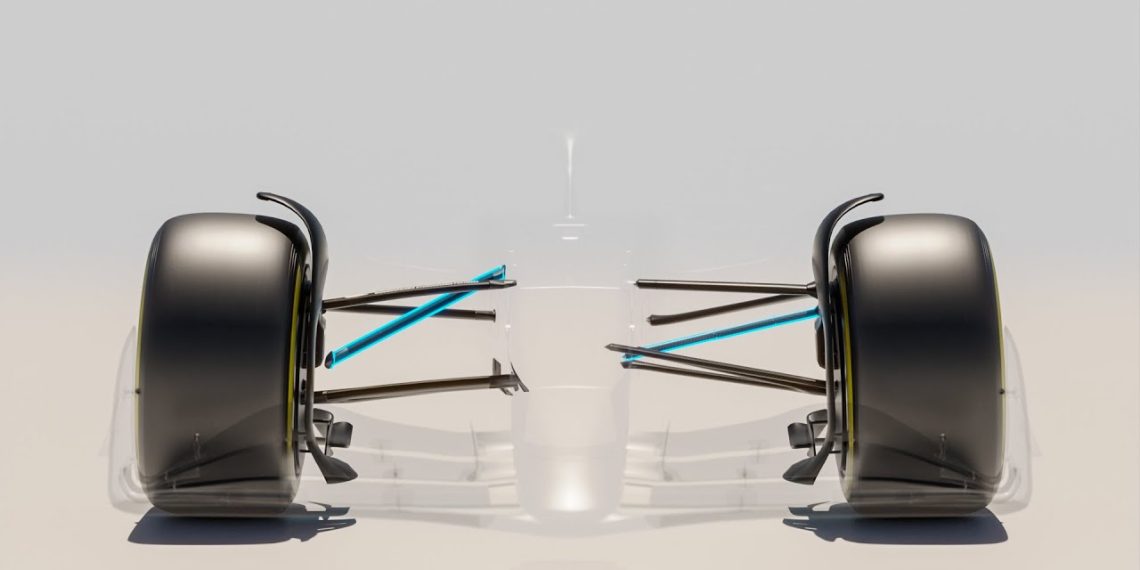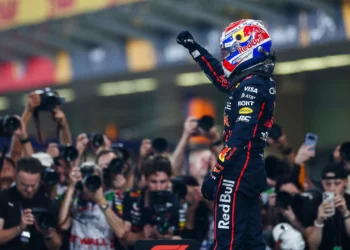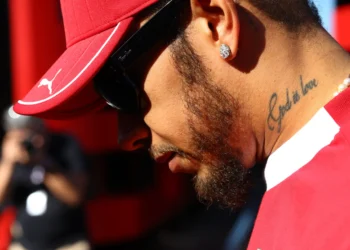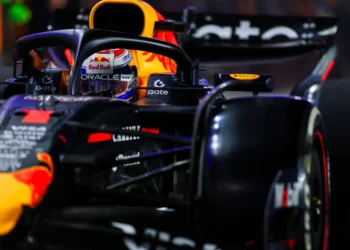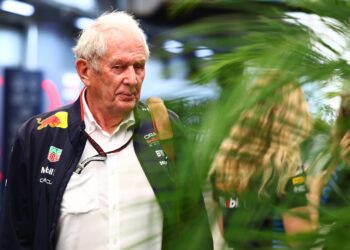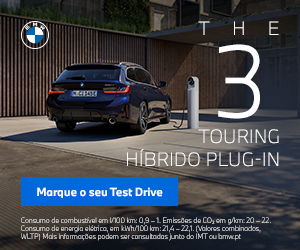When designing a Formula 1 car, every component matters—but few are as critical and complex as suspension layout. The decision between pushrod and pullrod configurations isn’t just about mechanical performance; it’s a choice that dictates aerodynamic efficiency, car balance, and overall handling.
As F1 prepares for the 2026 regulation changes, teams are reassessing their suspension concepts, and some—like Ferrari—are expected to switch from pushrod to pullrod in 2025. So, what makes one system better than the other?
Let’s break it down.
Pushrod vs. Pullrod: How They Work
💡 The Basics
- The pushrod connects low on the wheel assembly and pushes upwards toward a high-mounted rocker assembly in the chassis.
- The pullrod is mounted higher on the wheel assembly and pulls downward to a lower rocker assembly inside the chassis.
📌 Key Differences
- Pushrod: Better accessibility for mechanics, but bulkier and creates more aerodynamic drag.
- Pullrod: More aerodynamically efficient and lowers the center of gravity, but harder to work on and requires precise engineering.
🚀 2024 F1 Teams’ Suspension Choices
- Pushrod Front Suspension: Red Bull, Ferrari
- Pullrod Front Suspension: McLaren, Mercedes
- Pushrod Rear Suspension: McLaren, Mercedes
- Pullrod Rear Suspension: Red Bull, Ferrari
With a 50/50 split between pushrod and pullrod front suspension among top teams, it’s clear that both systems have advantages. However, with Ferrari rumored to switch to a pullrod front suspension for 2025, momentum may be shifting.
Why Pullrod Could Be the Future of F1 Suspension
1️⃣ Aerodynamic Advantage (70/30 in Favor of Pullrod)
- Suspension members aren’t just mechanical components—they shape the airflow from the front wing, influencing the underfloor aerodynamics.
- Pullrod systems reduce frontal area blockage, improving airflow to the car’s floor and sidepods.
- Pushrod suspension can create aerodynamic turbulence, especially with separate track rods like Ferrari’s 2024 design.
2️⃣ Lower Center of Gravity = Better Handling
- A lower-mounted inboard suspension system (pullrod) moves 15kg of weight down by 30cm, reducing weight transfer and improving cornering stability.
- This helps balance front-to-rear weight distribution, which is crucial for ground-effect cars, where managing aerodynamic balance under braking and acceleration is key.
3️⃣ Improved Suspension Rising Rate (70/30 for Pullrod)
- Pullrod suspension allows for a steeper rising rate—meaning the suspension stiffens as downforce increases.
- At low speeds, the car remains compliant, helping mechanical grip in slow corners.
- At high speeds (186+ mph), the increased stiffness provides stability, ensuring the car doesn’t become too pitch-sensitive.
- This allows drivers to commit harder into corners, particularly at high-downforce tracks like Suzuka, Silverstone, and Spa.
4️⃣ Ferrari’s Expected 2025 Switch: A Game Changer?
- Ferrari ran pushrod front suspension in 2024 but suffered more aerodynamic blockage than rivals.
- With McLaren’s success with pullrod suspension, Ferrari is expected to follow suit in 2025.
If Ferrari joins McLaren in running pullrod, it could trigger a wider shift across the grid.
Are There Any Downsides to Pullrod?
🔧 Maintenance Challenges
- Pullrod systems are harder to access, making setup changes and repairs more time-consuming.
- Pushrod designs allow quicker adjustments, which can be beneficial during race weekends.
⚖️ Structural Loads
- The pullrod operates under tension, requiring stronger components to handle forces—but this is less of an issue with modern materials.
Final Verdict: Should All Teams Move to Pullrod?
✅ Aerodynamic efficiency? Pullrod wins.
✅ Lower center of gravity? Pullrod wins.
✅ Better balance in ground-effect cars? Pullrod wins.
While pushrod suspension still has advantages in certain areas, the future of F1 suspension looks to be shifting toward pullrod—especially for front suspension.
With Ferrari expected to make the switch in 2025, will we see a full grid-wide adoption of pullrod systems for 2026’s regulation changes?
🚨 One thing is clear—teams that master pullrod suspension may hold the key to championship glory in the next F1 era.

